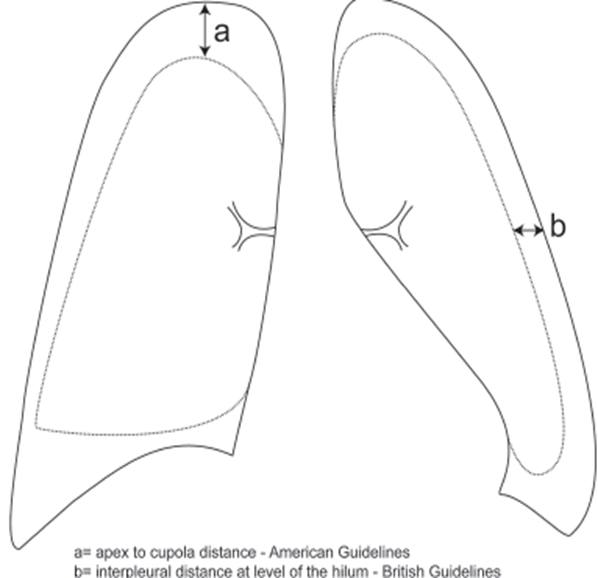Spontaneous Pneumothorax Management Options
The decision to observe or to treat should be guided by a risk stratification that considers the patients presentation and the likelihood of spontaneous resolution.
Determine degree of clinical compromise of patient
Significant breathlessness indicates the need for active treatment as well as supportive treatment
Determine size of pneumothorax
The size determines the rate of resolution and is a relative indication for active intervention
British Thoracic Guidelines (BTS) differentiate a large from a small pneumothorax as the presence of a visible rim of >2cm between the lung margin and the chest wall (at the level of hilum). 2cm approximates to a 50% pneumothorax by volume.
The American College of Chest Physicians (ACCP) estimate the volume by measuring the distance from the lung apex to the cupola. A visible rim of >3cm is considered a large pneumothorax.

Source: BTS Guidelines, Management of spontaneous pneumothorax, page 21
Likelihood of resolution
Very likely to resolve=small pneumothorax in a haemodynamically stable patient without significant parenchymal lung disease
Likely to resolve = large pneumothorax in a normal lung
Unlikely to resolve= secondary pneumothorax, enlarging pneumothorax
Will not resolve=tension pneumothorax
Options for site of care
Outpatient care
ED
Inpatient
ICU